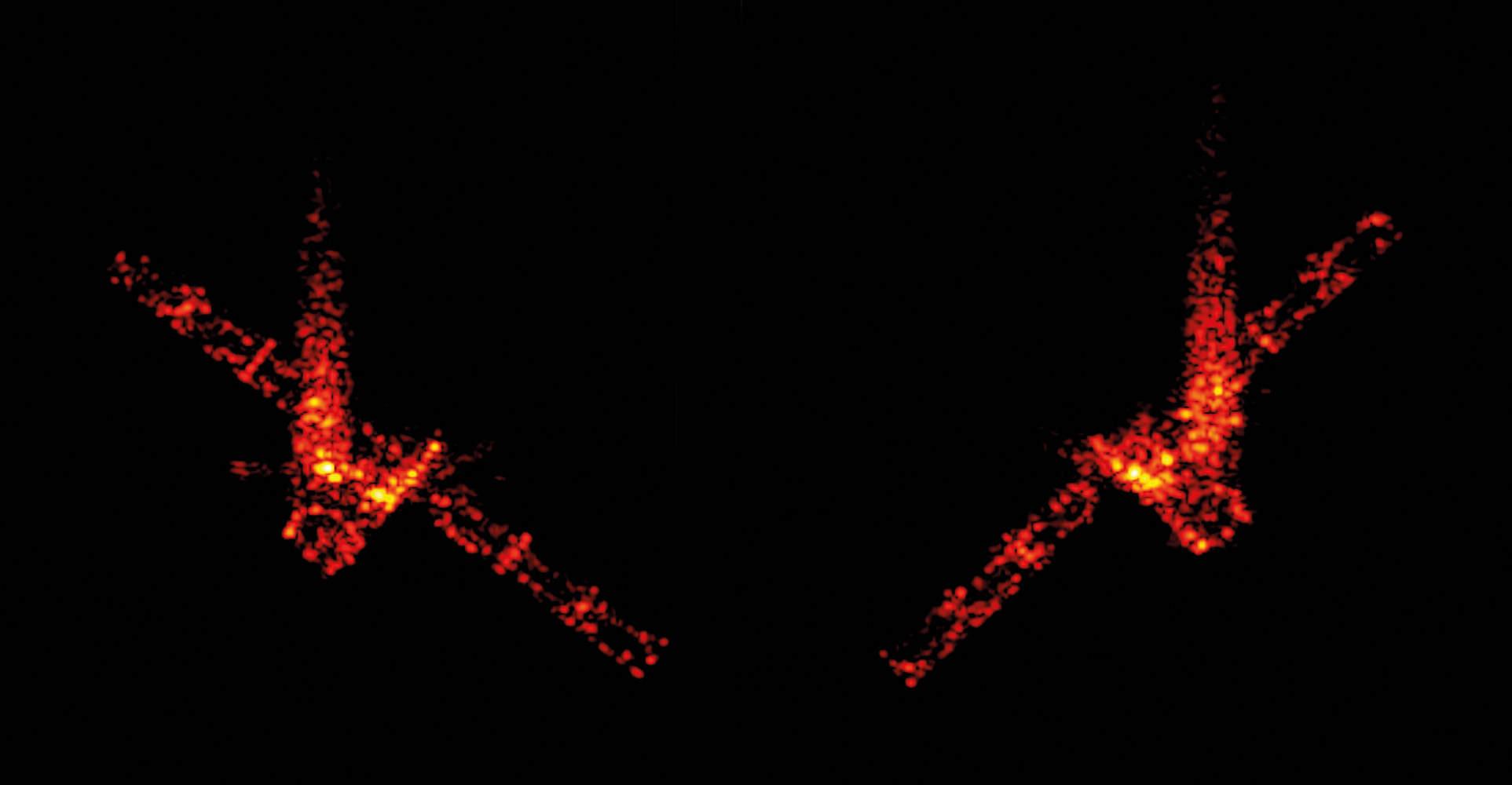On the Radar: Reentry of the Aeolus Satellite

For several years, it observed the wind from orbit – in 2023, ESA (the European Space Agency) had the satellite reenter the Earth‘s atmosphere in a controlled manner, with remaining debris intentionally directed for a safe demise. The event was monitored by the space observation radar TIRA of Fraunhofer FHR.
The low-Earth orbit is becoming increasingly crowded: not only are more and more satellites orbiting there, but the amount of space debris is also increasing. Space agencies are therefore moving towards having satellites reenter towards Earth in a controlled manner after their missions. For the most part, these satellites burn up upon reentry into the atmosphere, and any possible fragments are directed to fall into the ocean to avoid endangering anyone. Nowadays, most recently and future-built satellites are already designed for such reentry during their construction. In July 2023, the ESA had for the first time a satellite reenter the Earth‘s atmosphere in a controlled manner that was developed in the late 1990s and therefore not yet designed for this procedure: the Aeolus satellite, which had been determining global wind profiles from the Earth‘s surface to an altitude of 30 kilometers since August 2018.
Supported by TIRA Radar Data
The controlled reentry challenged the experts at ESA: using the remaining fuel of the satellite, they conducted a series of burns to position Aeolus optimally for reentry. They received support from Fraunhofer FHR, specifically from the space observation radar TIRA with its 34-meter parabolic antenna. The task of the joint German Space Situational Awareness Center (GSSAC), which closely cooperates with ESA, was to track Aeolus‘s reentry whenever the satellite was visible from Germany. Our data was sent immediately after each radar observation to GSSAC and ESA: Did the maneuvers have the intended effect? This information was crucial for the engineers: it allowed them to assess whether the next steps would proceed as planned. The information provided by the researchers at Fraunhofer FHR also included predictions about the satellite‘s reentry, both in terms of time and location. In other words: when and where would the remaining parts fall?
TIRA not only generated tracking information but also produced images of the satellite: what was the status of Aeolus? Was the satellite already damaged before reentry? This did not seem to be the case: the radar data showed the large ALADIN telescope, the main payload, as well as the solar panels. Another finding was that the satellite exhibited a slight intrinsic rotation in the final stages of reentry, meaning it was slowly spinning.
Our Data Support Research in the Field of Satellite Reentry
After the reentry, the researchers send a detailed report to GSSAC and ESA. The data collected by TIRA is not only interesting for the reentry of Aeolus but also for the simulation and modeling of future reentries – as such data is rare, but the field of research is active. The data can help researchers better understand satellite reentries, reduce uncertainties, and create more accurate predictions. Already, many satellites reenter the Earth‘s atmosphere at the end of their life, and with the increasing congestion in low Earth orbit, this will certainly become more frequent in the coming years.